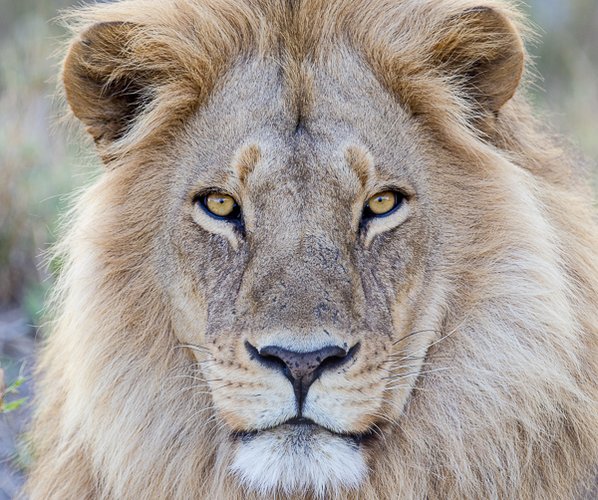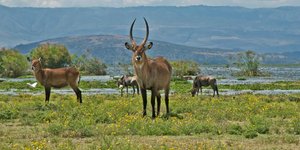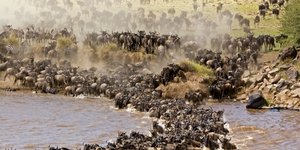Wildebeest
Connochaetes gnou| Connochaetes taurinus
Behavior and diet
The wildebeest is a large antelope that is better known as a gnu. The name wildebeest comes from Afrikaans and means ‘wild beast’. Wildebeest are found throughout sub-Saharan Africa and tend to prefer open plains and grasslands, particularly in Kenya and Tanzania, where over two million of these herbivores live and feed on the lush grasses. Two species of wildebeest exist in Africa: the blue and the black wildebeest.
Blue wildebeest (Connochaetes taurinus)
The blue wildebeest is the larger of the two and is a dark bluish-gray color, sometimes with faint stripes. This is the species that does the great migration between the Masai Mara and Serengeti year after year. The blue wildebeest is also known as the common wildebeest and the white-bearded wildebeest.
Black wildebeest (Connochaetes gnou)
The black wildebeest tends to have browner fur and is found in the southern part of Africa. The gestation period of the wildebeest is around eight to nine months, with one young being the average birth number.

 Botswana
Botswana
 Kenya
Kenya
 Malawi
Malawi
 Mozambique
Mozambique
 Namibia
Namibia
 South Africa
South Africa
 Tanzania
Tanzania
 Uganda
Uganda
 Zambia
Zambia
 Zimbabwe
Zimbabwe



